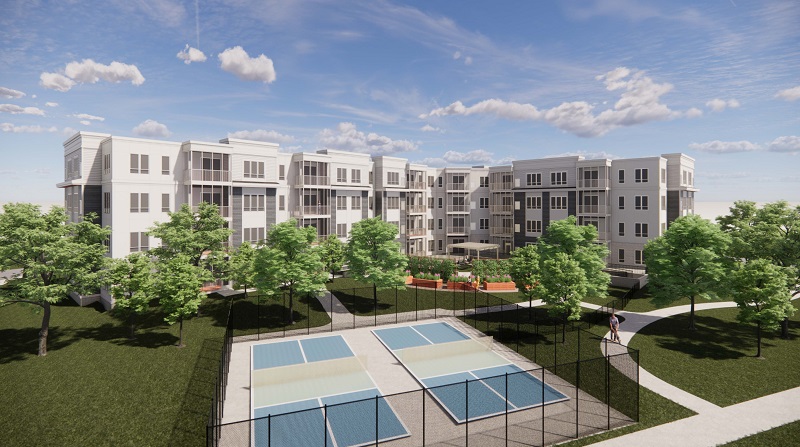Demand continues to rise across the United States for seniors housing, with the National Investment Center for Seniors Housing & Care’s most recent MAP Market Fundamentals Data report showing that the occupancy rate for seniors housing rose 0.9 percentage points from the third quarter to the fourth quarter of last year.
The occupancy rate jumped from 82.1% to 83%, up 5.2 percentage points from a low of 77.8% in the second quarter of 2021.
In response to this demand, senior cooperative housing communities are emerging as a new option for those looking for an affordable approach to retirement living.
Senior cooperative housing is a type of housing in which residents collectively own and manage the property, sharing in the responsibility of maintaining the community. Residents of senior cooperatives typically purchase a share of the property and pay monthly fees that cover the costs of operating and maintaining the community.
The cooperative community owns the land, buildings and common areas in cooperative living communities. A member-elected board of directors makes decisions regarding the upkeep of the community and any improvements that need to be made. Professional management teams work with these boards to maintain the communities.
The Minneapolis-St. Paul market is becoming a hotspot for these types of seniors housing developments, thanks in part to Artessa Development.
Minneapolis-based Artessa is building a new suite of co-op communities in the Twin Cities metropolitan area. Construction will soon start on Artessa Mound Harbor, which overlooks Lake Minnetonka; Artessa Golden Valley, which is nestled alongside Golden Valley Country Club in Golden Valley, Minnesota; and Artessa Canterbury Crossing, in the Canterbury Park area of Shakopee, Minnesota.
These new boutique co-ops will soon be joined by others being planned by Artessa.

Dena Meyer, president of Lifestyle Communities and Artessa Development, says that cooperatives offer seniors a new choice when planning their retirement years. Artessa’s cooperatives are open to seniors 62 and older.
“This is an alternative to single-family homes or owning a townhome,” Meyer said. “It’s ideal for people who want more of a connection with like-minded individuals.”
Seniors cooperatives, though, differ from assisted-living or independent-living seniors facilities. Cooperatives do not feature housekeeping services or meals. Instead, cooperatives are amenity-rich housing for those who are retired but still able to live independently.
For instance, amenities at Artessa cooperatives include outdoor living areas that feature pickleball courts, entertainment areas with grilling stations and fire pits and walking trails. Members of the cooperatives can also personalize their homes by selecting finishes that fit their own styles.
Artessa’s cooperatives also feature plenty of amenities inside their buildings. This includes a maker’s space; fitness studios with yoga and meditation areas; entertainment suites with a residential-type kitchen; underground parking; car wash bays; and pet wash areas.
Seniors cooperatives are unique in that members are buying a share to live in these developments. This means, as Meyer says, that they are stepping into a residence that is already pre-financed. Seniors don’t have to apply for individual financing for their own residences.
This means that cooperatives remain affordable for seniors, Meyer said.
“It’s about people wanting to do more of the things they want and less of the things they have to do,” Meyer said. “Anyone looking for a maintenance-free lifestyle and an abundance of amenities will do well at a cooperative.”
Artessa carefully plans in which communities to build its cooperatives, too, Meyer said. The key is to build these developments in walkable neighborhoods, so that cooperative members can walk to local shops, restaurants and golf courses. Artessa places many of its cooperatives near lakes and trail systems, too.
Each cooperative includes from 45 units to 78 units, Meyer said.
“We are trying to keep the boutique nature of these cooperatives,” she said. “We want our members to get to know their neighbors and not feel like they are living in a big apartment or a high-rise condominium.”
Meyer said that the average member of Artessa’s cooperatives is in his or her late 60s. That bodes well for the demand for this type of alternative seniors housing. Meyer points to statistics showing that by 2050, there will be nearly 90 million people in the United States who will be 65 and older.
There are a growing number of options for these older Americans. Seniors can choose from market-rate housing with no age restrictions, rental communities set aside for residents who are 55 and older, assisted-living facilities, memory care facilities and, of course, seniors cooperatives.
Meyer says that she expects Minnesota to remain an active area for seniors cooperatives. Artessa has been involved in more than 42 cooperatives that are now operating in Minnesota, either on the development or finance side, she said. And Artessa plans to expand outside the state, moving into the southwest areas of the country.
Artessa is also looking at expanding throughout Minnesota, Meyer said, and into another Midwest state that the company will announce later this year.
“Cooperative living is a great option,” Meyer said. “It provides maximum affordability and provides members with financial predictability.”
Meyer understands, though, why there aren’t even more senior cooperatives in the state and across the country. Building cooperatives requires a significant upfront cost, one that includes the expenses of marketing the communities. Meyer said that Artessa requires that its seniors cooperatives are 60% presold before the company begins construction.
“We have not had a problem reaching that 60% mark,” Meyer said. “We have a proven track record so that people know our projects will become a reality. It does require a lot of patience, education and advocacy on explaining the benefits of the cooperative model and lifestyle. The majority of our members? Once they move in, they wish they would have done this sooner.”




